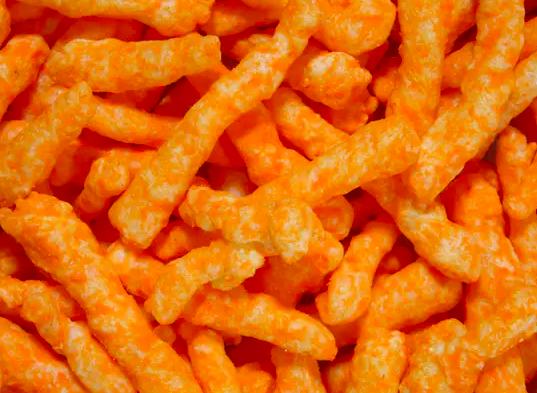The Cheetos Challenge

Cheetos, if you’re unfamiliar with them, are a junk snack food. They’re basically made of a cornmeal mush that is exposed to hot air, causing the cornmeal to puff up, a shape they retain as they’re fried in oil and solidify. The puffs are then coated in a “cheese seasoning” which, yes, does actually involve some cheese. And if you’ve ever seen a cheeto, you know they’re very, very orange; that color is an artificial additive.
If that sounds unhealthy to you, you’re right — Cheetos aren’t one of the five food groups. But they’re still tasty treats. Just ask the corvids.
Corvids are a family of birds, including jays, ravens, and most importantly for our purposes, crows and magpies. As non-human animals go, they’re pretty smart; as the Audubon’s magazine notes, “some are capable of using tools, playing tricks, teaching each other new things, even holding ‘funerals’.” While most animals use strength and will to survive out in the wild, corvids tend to use their bird brains to avoid conflict, choosing guile over force. For example, magpies, which are smaller than crows, tend to hang around their larger cousins. The reason: protection. The presence of the larger crows scares off would-be predators that would raid the magpies’ nests.
But in theory, at least, that should come at a cost for the magpies. While crows don’t eat magpie eggs, they still need to eat something. As magpies and crows share the same diets, the presence of crows seems like it would put the magpie’s food at risk.
To test how the two species interact when it comes to food, that should be as simple as just watching them eat, right? That’s easier said than done, as birds don’t have regular mealtimes like us humans tend to do, and similarly, they don’t go to the kitchen or dining room to eat — they just kind of go around until they find some seeds or something. To solve for this, behavioral ecologist Rhea Esposito came up with an idea: the aforementioned Cheetos. As the Associated Press reported, “Birds, like many of us when we’re forced to admit it, apparently like Cheetos. Both birds are also naturally suspicious of new things. And the bright orange color also solved a problem for Esposito. The traditional bait food, nuts and seeds, were hard to see for Esposito, who would watch from her car about 20 feet away. Cheetos — or sometimes their cheaper and yellower generic equivalent — worked well.”
Esposito found that the magpies were quick to try the new food — per the AP, they were “quicker and more daring” while the crows “repeatedly approached and retreated.” Ultimately, though, the crows realized that Cheetos taste good, and they started eating them as well. So, as Mental Floss notes, “Esposito decided it was time to crank up the competition. She set out new Cheetos bait smack in between two nests—one belonging to crows and one belonging to magpies—and sat back to watch the mayhem.” Mental Floss continues:
With other animals, this might have been the beginning of a blood bath. But these are corvids, which means they’re more prone to playing mind games than picking fights. And that’s exactly what happened: the crows started using the magpies. At first, the crows would wait for the smaller birds to arrive and test the bait. Once it proved to be edible and the coast was clear, the crows descended and bullied the magpies into leaving. After a while, Esposito said, the magpies just stopped trying.
The magpies, though, didn’t flee the scene entirely. Rather, they just ate other, less tasty things. For the magpies, the benefit of the crows’ protection was worth the culinary cost; for the crows, they proved that the bigger bird, not the early one, gets the junk food.
Bonus fact: Don’t worry if crows eat a lot of Cheetos — apparently, their bodies can handle it. In 2019, the Corvid Research Blog (yes, there’s a corvid research blog) reported on a study of the relative cholesterol levels of city crows versus rural crows. The urban crows often eat out of dumpsters and therefore have a lot of access to fast food, after all. The study (in the words of the bird blog) “found that eating cheeseburgers most days of the week had a demonstrable effect on the subject’s cholesterol levels,” which seems bad.
But surprisingly, “in the final piece [of the study], they examined the body condition, and 2-3 year survival of the 140 nestlings sampled along the urban to rural gradient. They found that cholesterol levels had no detectable effect on survival and were actually correlated with higher indices of body condition (meaning mass adjusted for size), a feature that is sometimes tied to higher reproductive success and survival.” So if you want to eat a lot of cheeseburgers, it may be a good idea to be reincarnated as a crow.
From the Archives: Crowing: Crows really are smart. (The video here doesn’t work; I’ll try to find a replacement.)
